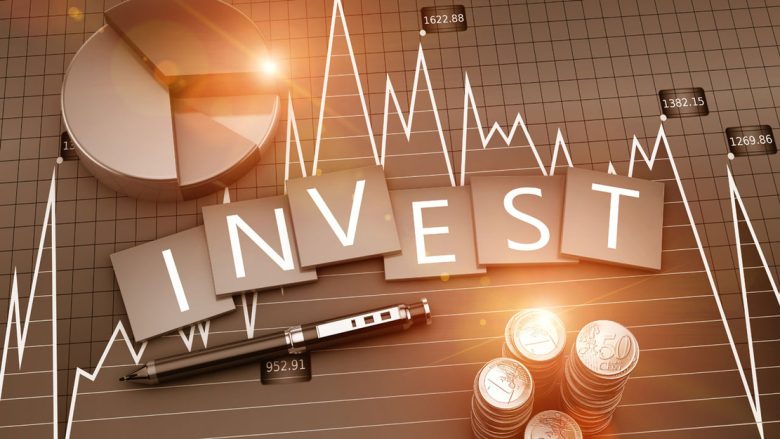Art and collectibles are among the most fascinating yet complex areas of personal investing. Unlike standard financial instruments, these tangible assets combine aesthetic value with potential financial return, offering investors a unique investment experience. Following recent market volatility, the global art market is expected to reach $65 billion by 2023, a significant growth that is attracting broad investor interest. Beginners should learn the fundamentals of art and collectibles investing to make informed decisions.
This guide covers essential techniques, considerations, and practical steps for building a successful art and collectibles portfolio. Whether you’re interested in modern art, vintage watches, rare books, or historical artifacts, these concepts will help you succeed. The art market, unlike the financial market, requires patience, expertise, and a genuine appreciation for the pieces you acquire.
Understanding the Art and Collectibles Market:
The art and collectibles market operates differently from the stock and bond markets. Cultural trends, historical significance, rarity, condition, and provenance, rather than financial parameters, drive this. Unlike traditional investments, art often appreciates over decades. In a highly fragmented market, demand and price appreciation potential vary by category. The market for modern art differs from that for Old Masters, just as the market for vintage comic books differs from that for rare coins.
To understand these market dynamics, you must research specific collection categories, understand Christie’s and Sotheby’s, and recognize that art can be less liquid than traditional investments. Price transparency varies by market segment, with some markets relying on price databases, while others rely on dealer information and auction results. Luxury goods are resilient during periods of inflation but are sensitive to fluctuations in wealth concentration and disposable income.
Assessing Investment Appetite and Risk Tolerance:
Investors should honestly assess their financial situation and goals before entering the art and collectibles sector. Art and collectibles take five to ten years to appreciate and are therefore not suitable for immediate liquidation. While traditional investments can meet your basic financial needs, a general guideline is to allocate 5–10% of your portfolio to alternative assets, such as art and collectibles. This market considers sentimental value, storage, insurance, and maintenance expenses when assessing risk tolerance.
Collectibles like classic cars and wine require ongoing maintenance and storage, which increases holding costs. The prices of art and collectibles can fluctuate significantly due to changing tastes, the introduction of new works, and shifts in cultural relevance. New investors should also consider their educational background and willingness to become acquainted with a specific area of collecting, as successful investing often requires in-depth research into the market, artists, or historical period.
Verification and Authentication:
Perhaps the most crucial aspect of investing in art and collectibles is authentication, as it can determine the difference between a lucrative return and a devastating loss. Professional authentication involves conducting provenance research, performing technical analysis, and obtaining the expert opinions of industry specialists. The provenance of an artifact provides crucial information about its legitimacy and legal ownership, which can influence its value. Authentication requires a certificate of authenticity, sales history, exhibition history, and proof of restoration or conservation work.
Working with reputable dealers, auction houses, and professional appraisers can alleviate concerns about authenticity; however, buyers should always ensure that independent authentication is performed. Modern authentication methods include scientific material testing, digital imaging, and tracking provenance through blockchain technology. Insurance market valuations must be conducted by professionals who have a comprehensive understanding of both art and finance. Verify the clarity of your ownership, comprehend any restrictions on resale or export, and keep an eye out for any instances of theft or illegal possession.
Portfolio Diversification:
The key to diversifying your investment in art and collectibles is spreading your risk across categories, periods, and price points, rather than focusing on a single artist or work. Regional references can also be beneficial because various regions value art forms and cultural objects in distinct ways. Price diversification allows beginners to start with less expensive pieces and gradually increase their investments as their confidence grows. Buying works from different periods can reduce the risk of changing tastes harming your portfolio.
Combining fine art with decorative objects, modern works with historical artifacts, and pieces by established artists with those by emerging artists are all examples of category diversification. A smaller number of high-quality works is often more valuable than a larger number of lower-quality works. Digital art and modern African art represent promising markets for collectibles; however, they require thorough research and risk assessment. Networking with knowledgeable dealers, collectors, and experts in your industry can create buying and selling opportunities.
Sales Channels for Art and Collectibles:
Buyers and sellers of art and collectibles use various channels, each with its own advantages and disadvantages. Large auction houses offer transparent pricing, professional cataloging, and broad market exposure, but they charge high fees and may refuse some consignments. Regional auction houses offer lower buyer’s premiums and less competition for mid-priced works. Established galleries charge higher fees than auction houses but offer expertise, authentication services, and long-term relationships.
Dealers and buyers can meet at art fairs that combine galleries and auctions. Online auction platforms such as Artsy, Saatchi Art, and others expand the global art market by verifying suppliers and authenticity. Estate auctions and antique fairs can yield rare works but require discernment from experienced buyers. Purchasing directly from the artist or their agent provides superior value and authenticity, but it’s important to take into account the long-term potential. Private dealers can acquire rare works not available to the public, but referrals are required.
Taxation of Art and Collectibles:
Art and collectibles are taxed differently from standard investments, which affects their acquisition and sale. The maximum capital gains tax rate on collectibles in the United States is 28%, higher than that for stocks and bonds held for more than a year. To file your tax return correctly and optimize your tax process, it is essential to record the purchase price, improvement costs, and sales costs. In 2018, similar transactions for personal property were abolished, eliminating tax-deferral strategies.
However, carefully planned and documented charitable donations, along with professionally appraised art and collectibles, can offer significant tax advantages. Cross-border transactions involve customs duties, VAT, and reporting requirements that vary by jurisdiction. The complex patchwork of regulations can have significant financial implications, making tax advice essential. Assessing the value of inherited items and considering charitable remainder trusts or other advanced procedures are all factors in estate planning. State and local taxes may apply, and some jurisdictions regulate the sale and storage of art.
Conclusion:
Investing in art and collectibles combines financial rewards with passion and culture. Success in this sector requires time, learning, and a focus on authenticity and market dynamics. Starting cautiously, gradually building experience, and setting reasonable expectations for returns and liquidity are crucial. A carefully selected and sustainable collection can appreciate significantly in value, but investors must balance optimism with risk management.
Experienced dealers, appraisers, and tax advisors can help you understand the challenges of investing and build effective networks within the collecting community. Remember that the most successful collectors often attribute their greatest gains to the personal satisfaction and cultural enrichment that come with owning exceptional pieces, suggesting that a genuine appreciation for a chosen area of collecting can be just as important as financial considerations.
FAQs:
1. How much money do I need to start investing in art and collectibles?
The minimum investment in art and collectibles is a few hundred dollars, but most financial advisors recommend an investment between $10,000 and $25,000 to build a valuable collection. Starting with a small collection can help you understand the industry and connect with dealers and collectors.
2. What are the ongoing costs of art and collectibles?
Insurance (0.1–0.15% of the annual value), proper storage or display, regular maintenance or repairs, and professional appraisals to renew the insurance are all additional costs. Some items require professional storage with a monthly fee.
3. How long should I plan to hold art and collectibles investments?
To truly create value, most successful art and collectibles investors hold their assets for 5-10 years. These markets are slow and have higher transaction costs than stocks, making short-term investing unprofitable.
4. Can art and valuables be stored at home?
Many items can be stored at home, but temperature, humidity, security, and protection from light damage should be controlled. Professional storage or display conditions at home may not be suitable for valuable items.
5. What if the item I purchased is fake or stolen?
How you handle authenticity issues depends on where you purchased the item and the warranty offered at the time. Reputable dealers and auction houses offer this warranty, but private transactions may not. Title insurance and due diligence before purchasing are the best ways to mitigate these risks.




